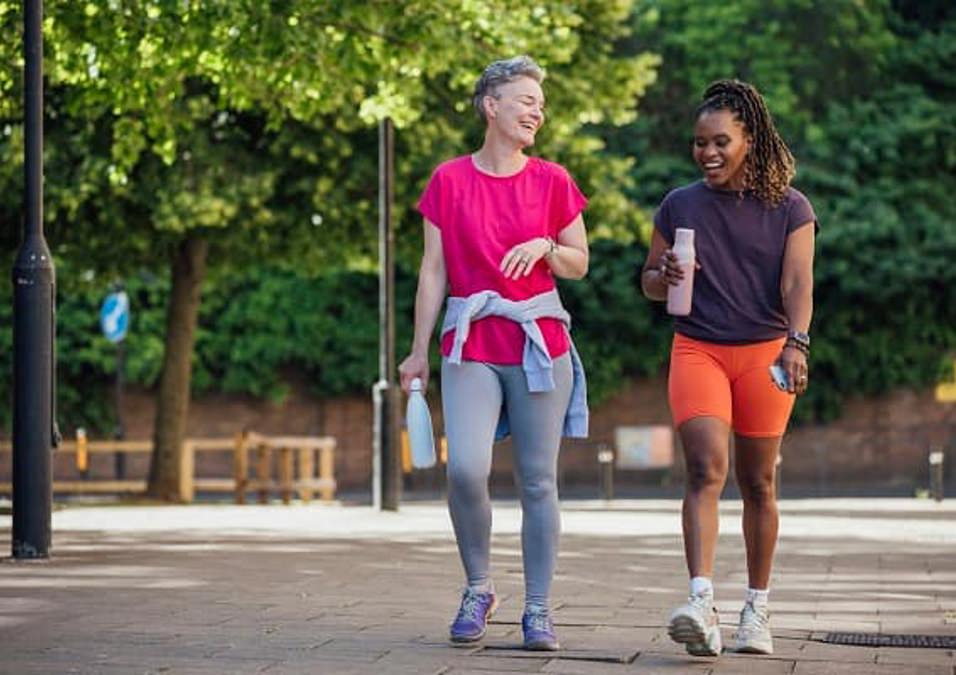Walking Alone Isn't Enough for Exercise

SIGN UP FOR YOUR FREE DAY PASS TODAY!
Walking is often seen simply as a way to travel from one place to another. However, it's also one of the most basic and accessible physical activities anyone can take part in.
The Benefits of Walking
While walking might not seem as intense as holding a plank or performing mountain climbers, it’s actually considered a bodyweight exercise.
This is because it engages large muscle groups to move the body’s weight, explains Dr. Marie Kanagie-McAleese, a pediatric hospitalist at University of Maryland Upper Chesapeake Health and the leader of Walk With a Doc in Bel Air, Md.
As you walk, “your quadriceps, hamstrings, calves—even your abdominals, biceps, and shoulders—are all using oxygen to contract,” says Ali Ball, an exercise physiologist and outpatient cardiac rehab/wellness coordinator at OSF HealthCare in Urbana, Ill.
This makes walking a form of aerobic exercise, which keeps your heart rate elevated for a sustained period. Research in the Journal of the American College of Cardiology suggests that 15 minutes of walking is as beneficial as five minutes of running.
From a physiological standpoint, walking offers significant health benefits.
“First, walking improves cardiovascular health,” says McAleese. “With better oxygen delivery to our organs, there is a reduced risk of heart disease, stroke, obesity, metabolic syndrome, diabetes, high blood pressure, and high cholesterol.”
Supporting Research
Research supports these benefits. A 2021 study in JAMA Network Open found that people who took at least 7,000 steps daily had a 50 to 70% lower risk of early death compared to those who walked less than 7,000 steps per day.
Additionally, a 2023 meta-analysis in the British Journal of Sports Medicine concluded that engaging in moderate-intensity physical activity—such as brisk walking—for just 11 minutes a day can reduce the risk of diseases like heart disease, stroke, and various cancers.
Moreover, walking is a simple way to mitigate the risks associated with a sedentary lifestyle, McAleese notes. “Increasing your walking throughout the day, even if it's not at a moderate-intensity level, is crucial,” as prolonged sitting raises the risk of many chronic diseases and associated mortality.
Is Walking Alone Sufficient Exercise?
While beneficial, walking alone may not meet all exercise needs.
Federal physical-activity guidelines recommend at least 150 minutes of aerobic physical activity weekly, along with two or more sessions of muscle-strengthening activities involving all major muscle groups. Both types of physical activity should be of at least moderate intensity.
You can easily adjust your walking routine to meet aerobic exercise guidelines. “Most people don’t exert themselves enough because they don’t view walking as exercise,” says Ball.
To increase intensity, you can walk faster, choose an uphill path, walk on varied terrain, or wear a weighted vest or backpack.
However, walking alone doesn’t fully address the need for muscle-strengthening activities. “Walking offers some bodyweight exercise, but it doesn’t engage all muscle groups effectively,” says McAleese.
Strength training brings additional health benefits such as reduced injury risk, and improved mobility and flexibility.
How to Make Your Walk Count as a Workout
Wearable devices have popularized the notion that everyone should aim for 10,000 steps a day. However, “that’s an arbitrary number not based in science,” says McAleese. A more crucial metric than steps, she points out, is time.
For the recommended 150 minutes of moderate-intensity physical activity each week, “you can break that up however works for you,” she explains. “If fitting in 10 minutes here and 10 minutes there is all you can manage, it still counts.”
To ensure walking qualifies as “moderate-intensity” exercise, you need to move with more intention than during a casual stroll from one meeting to another.
Walking briskly—where you can cover a mile in 15 to 24 minutes—is considered moderate-intensity physical activity. This pace indicates a purposeful, I-have-somewhere-to-be effort.
The best way to determine if you’re in that moderate-intensity zone is the talk test. “If you can speak in full sentences and carry on a conversation, but you’d become breathless if you tried to sing, that counts as moderate-intensity aerobic exercise,” says McAleese.
You can also check your heart rate. An easy way to find your maximum heart rate is to subtract your age from 220, says Ball. During moderate-intensity exercise, your heart rate should be about 50 to 70% of that maximum, according to the American Heart Association.
To maximize this type of physical activity, you should also consider your form. (Yes, there’s a proper form for walking.) “Focus on staying upright and engaging your abdominals,” says Ball.
Tighten your glutes, and let your arms swing naturally rather than exaggeratedly pumping them. Leaning forward, particularly if you increase your intensity, can lead to back pain.
For many, embracing walking as exercise might require a slight change in perspective. “We often concentrate on scheduling exercise as a specific activity that happens at a certain location and time during our day,” says McAleese.
“But we should really expand our definition of exercise to include all levels and amounts of physical activity performed throughout the entire day.”
Source: time
The opinions shared in the GymNation blog articles are solely those of the respective authors and may not represent the perspectives of GymNation or any member of the GymNation team.































































